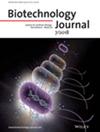Next-Generation Sequencing-Based In Silico Transgene Integration Profiling Tool Accelerates Cell Line Genetic Characterizations
Abstract
Genetic characterization including Southern blot analysis of recombinant Chinese hamster ovary (CHO) cell lines expressing biologics is an essential prerequisite for regulatory submissions. The transposon-based expression system for CHO cell lines enables the insertion of DNA sequences into the genome and has been widely used by the biopharmaceutical industry. The system yields clones that are both highly productive and genetically stable. However, it often incorporates target genes at multiple locations in the CHO genome, presenting challenges to profile the integration sites using Southern blotting. The standard Southern blot analysis is time-consuming, as multiple rounds of screening for optimal restriction enzymes (REs) are needed to ensure the development of high-quality blots with an optimal resolution of banding patterns. In this study, we developed an innovative in silico Southern blotting tool that leverages the targeted locus amplification (TLA) data and PICRH reference genome to recapitulate only DNA fragments containing the gene of interest (GOI). The tool can plot the size and digestion pattern of these fragments using R packages, allowing for the selection of optimal REs that yield the highest-quality blots virtually, thereby eliminating the need for multiple wet-lab RE screening. The utility of this novel tool has been demonstrated across multiple cell lines and confirmed to be effective and accurate in predicting banding patterns consistent with experimental data. The tool has been implemented in our cell line development workflow which greatly streamlined our cell line genetic characterization.

 求助内容:
求助内容: 应助结果提醒方式:
应助结果提醒方式:


